- Joined
- Jul 7, 2006
- Messages
- 6,485

[FONT=Georgia, serif]A Guide to Preventing and Annihilating Mold in PVC/Plastic-based Toy Collections in Humid Climates[/FONT]
[FONT=Georgia, serif]Introduction[/FONT]
[FONT=Georgia, serif]If you are a toy collector like myself ( My Little Ponies are my “thingâ€) and you live in a humid climate (Mississippi, anyone?) you will probably have to tackle the problem of mold sometime in your collecting career. I'm not talking about the mold or “PVC cancer†that has long since died but has permanently blemished the plastic, such as “pindot mold,†or “circle dot moldâ€. I'm talking about the living mold -- the fuzzy-wuzzy kind. I had been collecting for almost 4 years before the mold problem caught up to me. I thought I had everything under control; when I washed my ponies, I let them dry at least 24 hours before reintroducing them back into the “herd†or display area. I kept desiccant packets (those little silica gel packets that come with your shoes that say, “DO NOT EATâ€) with my collection at all times. I dusted (OK, I dusted once in my 4 years of collecting, so sue me!) Yet, a month from making it 4 years into collecting mold-free, I spotted the dreaded white fuzzies growing on the face of Powder, one of the year 2 unicorns, and a childhood pony of mine. Then I saw it on many others.[/FONT]
[FONT=Georgia, serif]ATTACK OF THE MOLD! I geared up into full-blown battle mode, although I didn't have much in my defensive or offensive array. I was out of new desiccant packets (desiccant absorbs moisture), I didn't have a dehumidifier or a hygrometer (measures relative humidity), and I was on my last two bleach wipes. Panic set in, and I decided before I made another move, I should calm down and do a little research.[/FONT]
[FONT=Georgia, serif]Most of what I found in my research was related to very horrible mold remediation for homes that were flooded. Although to me it felt like that much of a devastation, I had to be realistic. So I came up with a plan; in my research, (1) I've gathered up the best methods for mold-annihilation in a plastic toy collection. Those guidelines will be outlined in detail below, with “where to buyâ€, “how to,†and other helpful tips. (2) I've created guidelines of preventative actions to keep mold from coming back. [/FONT]
[FONT=Georgia, serif]To the best of my knowledge and experience, the methods I describe will be safe for a plastic-based toy collection. I've taken into account the problems of fading, paint removal, and plastic-degradation. The goal is to keep our collectibles in pristine condition, without using harsh chemicals. One of my primary concerns is smell; if you're a collector of toys from the 1980s, you'll know that if you find a toy that is still scented, it's a little treasure that you'll want to keep mint, so I try not to use any harsh chemicals that will remove or mask the scent, and none of the methods I use will ruin or dry out the plastic or plastic hair, however, some of the chemicals may leave a scent. I suggest using a little pure water after the solution, to wash off any of the solution residue. We want to be safe, yet effective. Again, the type of mold I'm talking about preventing and getting rid of is the living kind, not the blemishes left behind from previous mold, regrind, or other plastic degradation.[/FONT]
[FONT=Georgia, serif]Mold Prevention Guidelines[/FONT]
[FONT=Georgia, serif]Mold prevention basics[/FONT]
Conditions that enable mold to grow: Darkness, moisture, cool to warm temperatures.
[FONT=Georgia, serif]Keep the relative humidity in your home and collection area between 30-50%. Mold thrives above 60%. To measure relative humidity, purchase a hygrometer or a dehumidifier that has a hygrometer attached. [/FONT]
[FONT=Georgia, serif]Regular dusting, checking, and cleaning will prevent mold from getting out of control. [/FONT]
[FONT=Georgia, serif]Drying your collectibles before storing or displaying is a number one concern. [/FONT]
[FONT=Georgia, serif]In addition to a dehumidifier, you might consider purchasing packets of desiccant to keep in your collection shelves to prevent moisture build-up. Remember to check and replace your desiccant.[/FONT]
[FONT=Georgia, serif]Annually: (July)[/FONT]
[FONT=Georgia, serif]1.) Clean and disinfect entire collection [/FONT]
[FONT=Georgia, serif]Every piece and accessory that is exposed to the air should be cleansed annually in soap and water or a white vinegar solution. (If you want to bypass some items on the annual cleaning, make sure you follow these criteria: any item that has previously been cleaned and dried can be stored in a tote of some sort with some desiccant packets. As long as they are checked in your bi-annual mold check, and come out clean, they do not need to be re-cleaned annually.) If you live in a drier climate, this step can be done once every two years, rather than annually.[/FONT]
[FONT=Georgia, serif]If you do not have time to clean your entire collection, I suggest tackling one shelf/section at a time. For most of us, cleaning an entire collection could be a week-long debacle, but luckily as long as we clean one section at a time, once a year, we're in the green. [/FONT]
[FONT=Georgia, serif]See the method described in detail in Appendix I. [/FONT]
[FONT=Georgia, serif]2.) Dry collectibles for 48 hours[/FONT]
[FONT=Georgia, serif]I suggest setting a dehumidifier near your drying collectibles. This will help speed the drying process, as well as making sure the inside of your items (such as the inside of ponies' bodies and heads) are thoroughly dried. [/FONT]
[FONT=Georgia, serif]3.) Clean display area[/FONT]
[FONT=Georgia, serif]Use a vinegar or bleach solution and wipe area down with cloth. If you feel so inclined, wipe down area again with water, to get rid of residue from cleaning solution. Set a fan or dehumidifier on the area after cleaning to further dry and remove dust. After drying, dust shelves once more, sweep floors and consider mopping the floor. Use fan and or dehumidifier again if you choose to mop. Your display area should now be sparkling clean and ready for your clean collectibles. [/FONT]
[FONT=Georgia, serif]4.) Put everything back![/FONT]
[FONT=Georgia, serif]Now that everything is disinfected and dry as a bone, everything can be put back it its place. When you're putting them back, make sure to listen to Radiohead's “Everything in its Right Place.†That was a long process, but look on the bright side: Your ponies will rarely have dust build-up, they will be free of mold and mildew, and will always have awesome hairstyles. Plus, you'll get some quality time with your ponies, and will always know the current condition of your ponies. Also, as you are putting back your ponies, use this opportunity to place new desiccant packets around your collection, behind ponies and playsets.[/FONT]
[FONT=Georgia, serif]Bi-annually: (October, May)[/FONT]
[FONT=Georgia, serif]1.) Mold check[/FONT]
[FONT=Georgia, serif]Using a LED flashlight, thoroughly check your collection for any signs of mold. [/FONT]
There are many different types of mold, in many different forms and colors. Here's what grew on my ponies:



[FONT=Georgia, serif]2.) Wipe Down Collection[/FONT]
[FONT=Georgia, serif]If any mold or dust is spotted, wipe down the entire collection, or the affected items (if you are short on time) with a cloth that has been dampened by either a vinegar solution, or a bleach solution. Let items dry away from collection, and reintroduce them into their “spots†in the collection display once they are completely dry. Again, if you so choose, you may wipe them down with a cloth in pure water after the solution, to get rid of any of the solution residue or scent.[/FONT]
[FONT=Georgia, serif]Tri-annually: (December, April, August)[/FONT]
1.) [FONT=Georgia, serif]Dust your collection[/FONT][FONT=Georgia, serif]
[/FONT]
[FONT=Georgia, serif]Dust build-up provides a nice home for mold-- and dust contains many mold spores. Dust also contains food for mold. Dust and moisture are the ultimate enemies- eliminate dust and humidity, and you will say “bye bye†to any problems of mold affecting your collection, which you will know is a big investment if you keep track like I do. I use a faux lambswool duster. I think a microfiber cloth would do just as well, and can be bought in bulk. I would not recommend a feather duster. [/FONT]


[FONT=Georgia, serif]2.) Check and/or change out desiccant packets[/FONT]
[FONT=Georgia, serif]Desiccant is a great item to keep on hand if you live in a humid climate, however, keep in mind that even this reaches its point of absorbancy. If you have a desiccant that can be regenerated (such as drierite) you should pop the desiccant canister/loose desiccant in the oven for the appropriate time and temperature based on manufacturer suggestion. If you aren't sure if your desiccant can be regenerated, just throw it out and get a replacement ASAP. [/FONT]
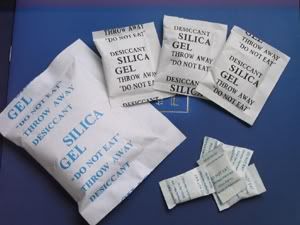
[FONT=Georgia, serif]Monthly: [/FONT]
[FONT=Georgia, serif]1.)Run dehumidifier until relative humidity is in the 30% range[/FONT]
[FONT=Georgia, serif]Mold typically grows in cool-warm, damp and dry areas of the home. Mold will thrive when relative humidity is higher than 60%. You may consider doing this weekly if you live in a very humid climate. Some dehumidifiers come with a hygrometer (remember, this measures relative humidity) but if it does not, a hygrometer can be purchased separately.[/FONT]
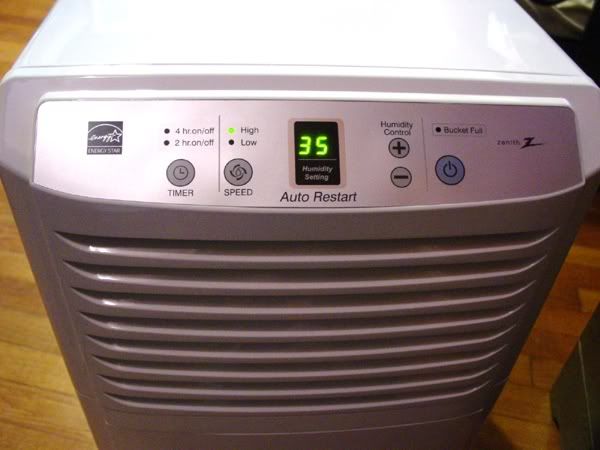
Dehumidifier set to a 35% relative humidity goal
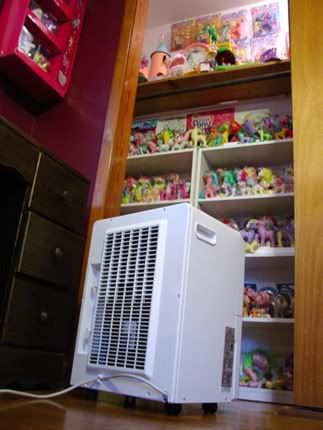
Dehumidifier facing collection display, with plenty of room around it for air circulation.
[FONT=Georgia, serif]2.) Clean new collection items[/FONT]
[FONT=Georgia, serif]Before introducing any new collection items into your collection display, make sure to disinfect, style hair, and let dry for 48 hours. You never know where the item was stored or what conditions it was in. Even if it looks mint, you'll want to clean the item, because it could have some mold spores or other icky things inside or on the item. [/FONT]
[FONT=Georgia, serif]3.) Run your fan and air conditioner[/FONT]
[FONT=Georgia, serif]If you own a fan, consider running the fan on a gentle cycle once or twice a month near your collection to keep air circulating and dust from settling on your collection. In the summer, when you run your air conditioner, it will dehumidify the air, so you may not have to run the dehumidifier as often.[/FONT]

[FONT=Georgia, serif]Mold Remediation/Annihilation Guidelines[/FONT]
[FONT=Georgia, serif]So, you've spotted some mold on a few of your collectibles, now what? Follow these guidelines to help get rid of the mold.[/FONT]
[FONT=Georgia, serif]1.) Clean and disinfect all collectibles and accessories[/FONT]
[FONT=Georgia, serif]See the method described in detail in Appendix II. [/FONT]
[FONT=Georgia, serif]2.) Sunlight treatment for drying and disinfection[/FONT]
[FONT=Georgia, serif]If you have significant sunlight at the time you spot the mold, consider setting cleaned collectibles in the sun for no longer than 30 minutes to an hour. The sun is a natural disinfectant, and mold will be killed by the sunlight exposure. Take precautions, however, as the sun can fade the colors your collectibles. Also, sun is one of the only things in nature that breaks down plastic, so don't keep the exposure time over 1 hour at the maximum. Also, I would not recommend the sun treatment during Spring of Fall, as there is lots of stuff floating through the air, such as pollen, leaves, dust. I'd suggest Summer or a sunny Winter day for this treatment, when the air seems to be fairly clear. [/FONT]
[FONT=Georgia, serif]3.) Dry items for 48 hours[/FONT]
[FONT=Georgia, serif]Make sure to let your items dry for 48 hours away from the collection display area, in a well-ventilated room. Place a dehumidifier in the room with them as they dry, and if you have a fan, turn it on a low setting. Remember, moisture is one of the key enemies. Mold cannot grow without moisture, so take it out of the equation before storing and displaying your collectibles.[/FONT]
[FONT=Georgia, serif]4.) Clean display area[/FONT]
[FONT=Georgia, serif]Use a vinegar or bleach solution and wipe area down with cloth. If you feel so inclined, wipe down area again with water, to get rid of residue from cleaning solution. Set a fan or dehumidifier on the area after cleaning to further dry and remove dust. After drying, dust shelves once more, sweep floors and consider mopping the floor. Use fan and or dehumidifier again if you choose to mop. Your display area should now be sparkling clean and ready for your clean collectibles.[/FONT]
[FONT=Georgia, serif]5.) Put everything back on display![/FONT]
[FONT=Georgia, serif]Make sure to throw in some of those silica gel desiccant packets behind ponies and playsets. If you don't want to use those, I'd suggest getting one of drierite's larger desiccant canisters that can be easily located and replaced, rather than searching for last year's desiccant packets!
[/FONT] [FONT=Georgia, serif]HOW TO[/FONT]
[FONT=Georgia, serif]Appendix I: General, annual cleaning[/FONT]
[FONT=Georgia, serif]Follow the method described below to disinfect all your collectibles.[/FONT]
[FONT=Georgia, serif]Set up your area in the bathroom or kitchen (sink and clean workspace are necessary.) Have towels at the ready. Items you will want to have on hand are: Gentle shampoo (such as Johnsons and Johnsons' Baby shampoo), gentle hair conditioner, a washcloth or gentle scrubbing brush, Mr. Clean magic erasers, and some acetone. Since you have probably already cleaned your ponies before, there is no need to spend tons of time on each pony, especially since you have to wash each one. Just get the washcloth or brush wet with warm, soapy water, and wash the pony's body with it. If you want, you can submerge the pony and clean her inside, but that is not necessary. [/FONT]
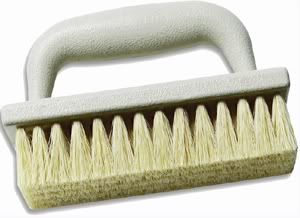
[FONT=Georgia, serif]Also, rinse the hair gently under a light stream of clean water, and wash with the shampoo if you desire. Rinse, rinse, rinse, and squeeze excess water out of hair using a dry towel. Condition her hair if you would like to, and leave for a few minutes. Then rinse, rinse, rinse again to get all the residual conditioner out. Towel-dry her hair and body. As you are moving from pony to pony, simply place pony on towel to dry, if possible position her so that her tail hole is facing down, so that the water drains out onto the towel. After cleaning is complete, move a dehumidifier into the drying area, and turn on a fan to help speed drying process. Wait 48 hours before putting ponies back on display. [/FONT]
[FONT=Georgia, serif]For curly hair ponies: If you have a pony that has special curls, be very gentle with her and do not use the faucet for running water. Fill up a medium-sized bowl with lukewarm water or cool water only- warm water will relax the curl. Rinse and clean her hair in one bowl, and use another bowl with fresh water to rinse all the residual shampoo and/or conditioner out of her hair. Towel dry excess moisture. When you dry her hair with the towel, hold the hair in such a way that keeps the curl, then wrap the towel around that and squeeze gently before setting out to dry. Dry with pony on her side, rather than standing up, and position hair how you want it to dry. [/FONT]
[FONT=Georgia, serif]Use acetone or Mr. Clean Magic Eraser as needed to remove any spots you may have missed in your initial cleaning of your pony. Be very careful with acetone and symbols- it will remove paint, and it has harmful fumes, so use in a well-ventilated area. [/FONT]
[FONT=Georgia, serif]Appendix II: Cleaning to get rid of mold[/FONT]
[FONT=Georgia, serif]Follow the method described below to disinfect all your collectibles.[/FONT]
[FONT=Georgia, serif]Set up your area in the bathroom or kitchen (sink and clean workspace are necessary.) Have towels at the ready. The equipment you will want on hand is as follows: white vinegar or bleach, water, gentle scrubbing brush or wash cloth, gentle shampoo and conditoner. Choose which you'd rather use between vinegar and bleach. I prefer vinegar, as it is not harmful to you, and is very cheap in bulk. I am not sure how bleach will affect your pony- in my experience it does not whiten or discolor ponies, but I have only used it on a few. Mix a 1:3 solution of water to vinegar (ex. 1 cup water to 3 cups vinegar.) This is your vinegar solution. (If you prefer bleach, use a 1:5 solution (1 cup bleach to 5 cups water.) You will dunk the pony in this solution (either vinegar or bleach) and scrub, scrub, scrub. Make sure to get all mold off pony, and if you feel comfortable doing it, remove the head and scrub the insides.[/FONT]

[FONT=Georgia, serif]Now that your pony is mold-free and disinfected, you will want to rinse her off (body and hair) in pure water. You can either use fresh tap (preferred) or a bucket with clean water for dunking and swishing. The rinsing should remove the vinegar or bleach smell from your pony. However, now you will want to fix the hair up, so that is nice and soft and styled. Shampoo, rinse, condition, rinse, rinse, rinse. Then squeeze excess water out of hair and let dry. Feel free to use curlers or anything like that while the hair is damp, so that when it is dry, the style will be set. I generally just wrap the ponies' hair around their neck or legs to achieve a gentle, yet traditional curl. [/FONT]
[FONT=Georgia, serif]WHERE TO BUY[/FONT]
Desiccant
[FONT=Georgia, serif] Ebay.com search: “desiccant†or DRIERITE - Number 1 in Drying Technology For Over 60 Years[/FONT]

[FONT=Georgia, serif] Recommended items from drierite: [/FONT]
- [FONT=Georgia, serif]Drierite Desiccants and http://www.drierite.com/catalog3/page15b.cfm[/FONT]
- [FONT=Georgia, serif]http://www.drierite.com/catalog3/page15a.cfm[/FONT]
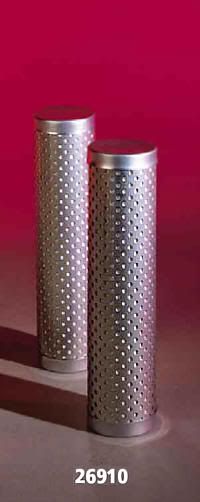
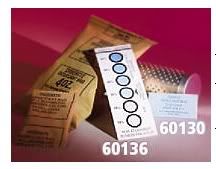
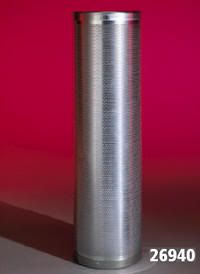
[FONT=Georgia, serif]http://www.consumerreports.org/cro/appliances/heating- cooling-and- air/dehumidifiers/index.htm[/FONT]
[FONT=Georgia, serif]Hygrometers[/FONT][FONT=Georgia, serif]
[/FONT]
[FONT=Georgia, serif]http://www.theweatherstore.com/hygrometers.html[/FONT]
[FONT=Georgia, serif]Vinegar/Bleach[/FONT][FONT=Georgia, serif]
[/FONT]
[FONT=Georgia, serif]Grocery stores, dollar stores, hardware stores[/FONT]
[FONT=Georgia, serif]Dusters[/FONT][FONT=Georgia, serif]
[/FONT]
[FONT=Georgia, serif]Grocery stores, dollar stores, hardware stores[/FONT]
[FONT=Georgia, serif]http://www.alldusters.com
[/FONT]

Faux lambswool duster
[/FONT]
Last edited:

